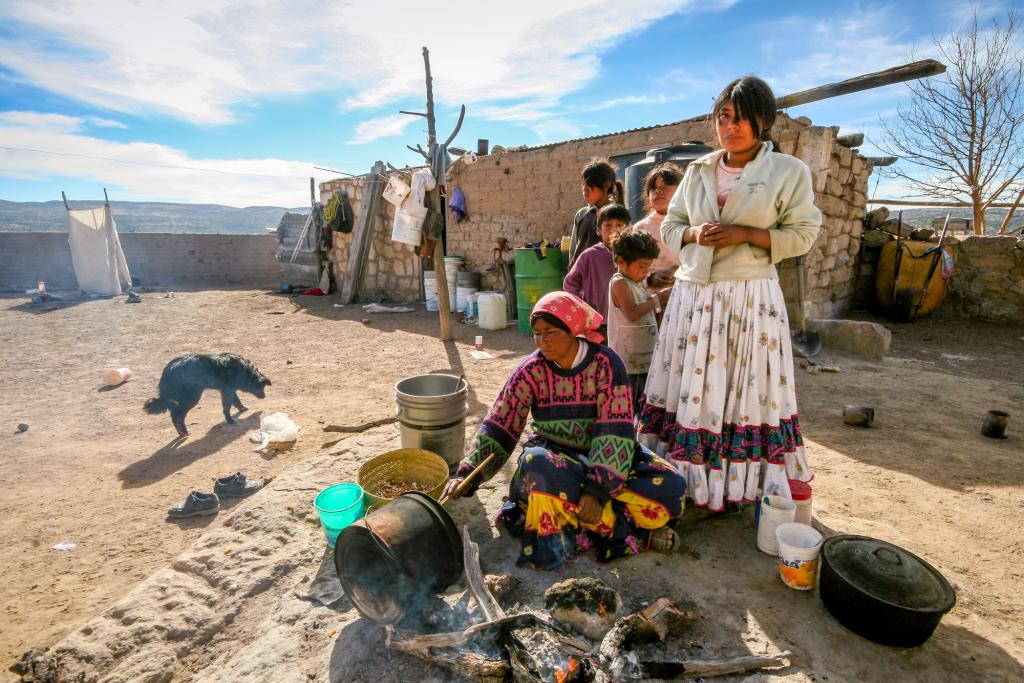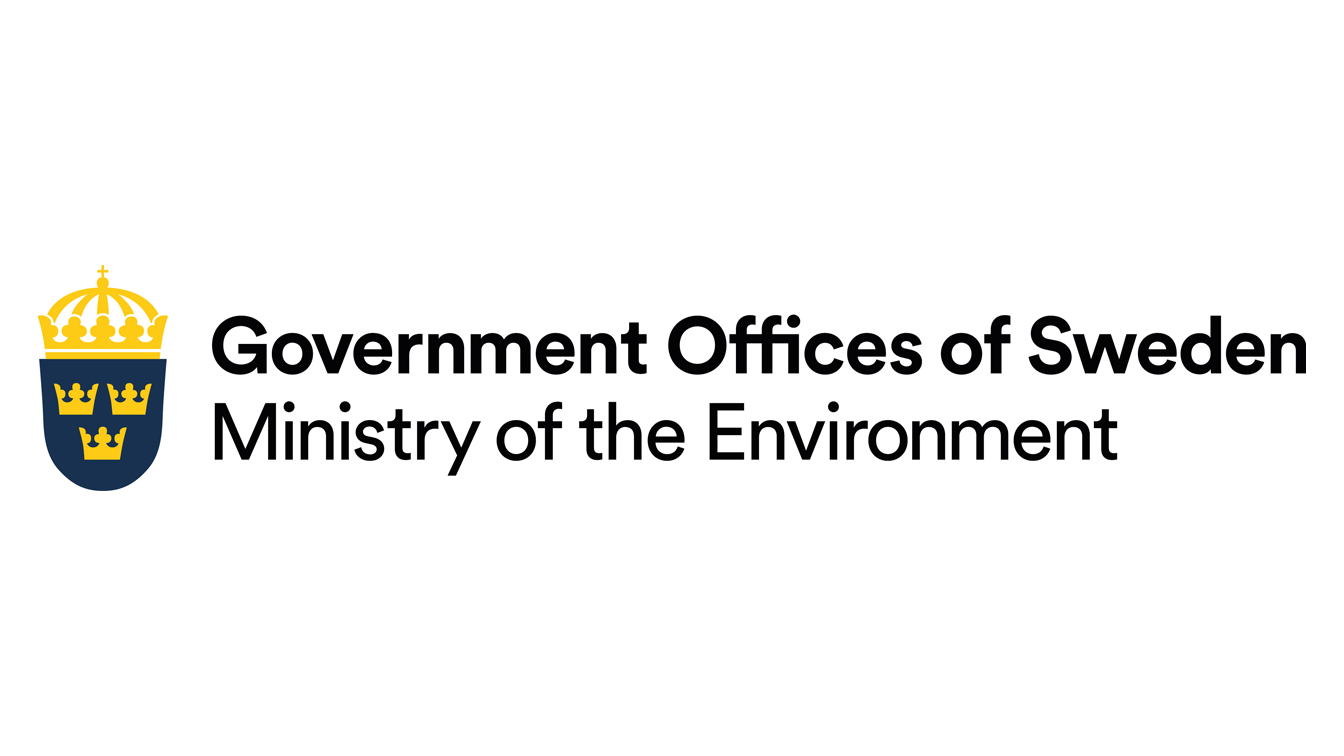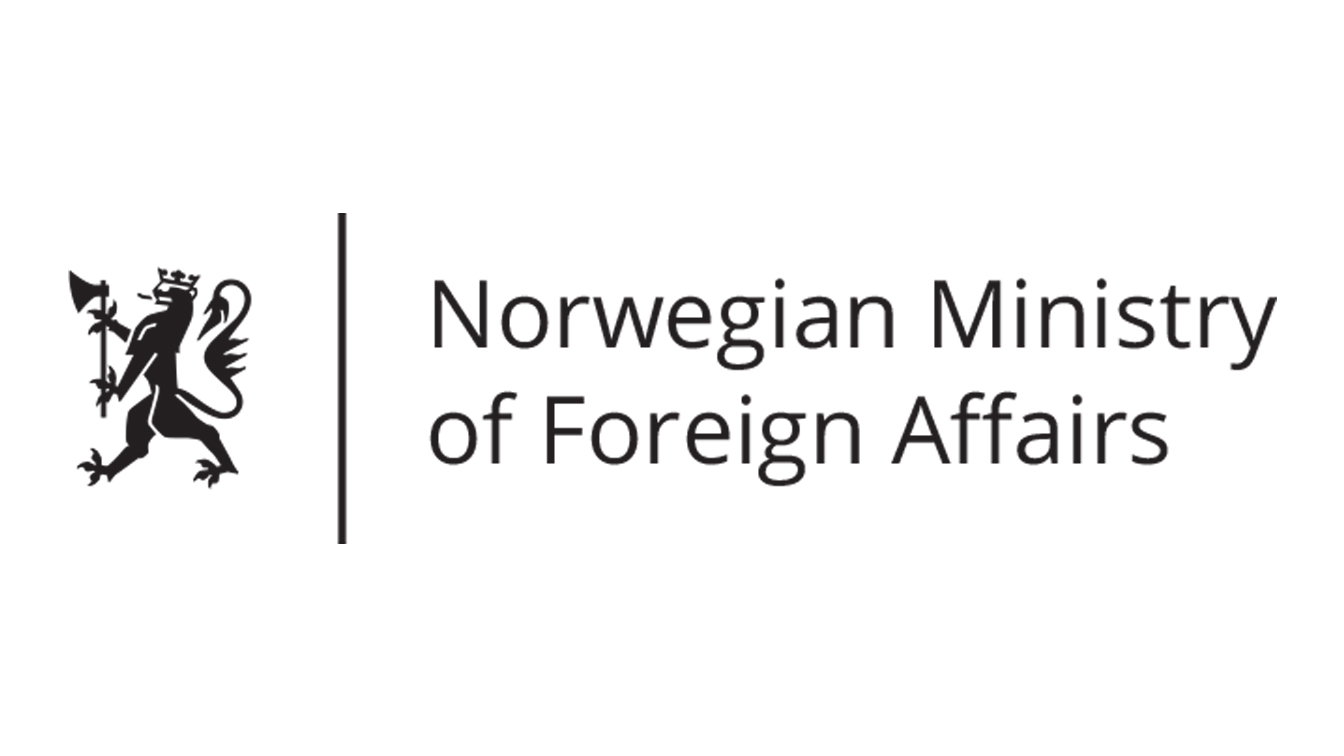Merging the Poverty and Environment Agendas
Still Only One Earth: Lessons from 50 years of UN sustainable development policy
Climate change, conflict, and COVID-19 are forcing a reassessment of how we eradicate poverty while addressing overlapping planetary emergencies. This brief explores the evolution in awareness of how poverty and the environment are linked, as well as solutions such as reining in excessive resource consumption by the wealthiest 10% and shifting government focus away from GDP growth to indices of national wellbeing that include the historically marginalized and the environment. (Download PDF) (See all policy briefs) (Subscribe to ENB)
The world’s richest 1% own 44% of the world’s wealth, while almost half the world’s people get by on less than USD 5.50 a day. The average person’s consumption of oil and other resources is up to 30 times higher in rich countries compared to poor ones. Among the poor, women are more likely to be in low-paid or unpaid work roles, while female-headed households are among the world’s poorest. In developing countries, a child born to poor parents is twice as likely to die before the age of five than a child born into a wealthy family.
When I feed the poor, they call me a saint. When I ask why so many people are poor, they call me a communist.
We live in an unequal world, where the lack of food and other necessities is a symptom of deeper systemic issues. Attempts to solve global environmental challenges must consider the nature and scale of human need around the world. Climate change, biodiversity loss, land degradation, pollution, and other aspects of global environmental change are not only environmental problems; they are also economic and social ones.
From an environmental perspective, both poverty and unsustainable patterns of production and consumption are key drivers of environmental degradation. At the same time, environmental degradation and climate change can drive poverty. While there is no easy solution, poverty and the environment must be addressed together.
Defining and Redefining Poverty
What is poverty?
Until the 1970s, household income was the commonly used yardstick to measure poverty, based on what was needed to access necessities such as food, fuel, accommodation, and clothing (UNDESA, 2015). Over time, this economic indicator was gradually supplemented by more complex approaches. Introduced by the International Labour Organization’s World Employment Conference in 1976 (Jolly 1976), the “basic needs” approach focused on a range of human needs beyond food and shelter, including social services such as healthcare and education. While providing a more complete picture of people’s wellbeing, the basic needs approach was still consumption oriented. In the 1980s, Indian economist Amartya Sen instead argued poverty is a complex and multidimensional concept. Freedom and “capabilities” to achieve wellbeing are what count, rather than the minimum needed for physical survival (Sen, 2001).
Building on Sen’s work with economist Mahbub ul Haq, the United Nations Development Programme (UNDP) introduced the Human Development Index (HDI) in 1990, which takes a multidimensional approach to poverty by examining different measures of deprivation to provide a single, composite number for each country. The annual Human Development Reports, which use the HDI, provide a way to compare countries, but often gloss over important differences within countries and among different population groups. Men and women, for example, may experience deprivation differently. Economic wellbeing may not necessarily translate into greater freedoms for women and girls, Indigenous peoples, persons with disabilities, and other marginalized groups.
In response to critiques, in 1995 the UNDP introduced new ways to measure wellbeing, including a Gender Empowerment Measure, which considered women’s representation in national parliaments, economic decision-making positions, and women’s share of income.

Some environmental dimensions of poverty, such as availability of clean water and sanitation, and protection from mosquito-borne diseases like malaria, were reflected under the Millennium Development Goals (MDGs). Emerging from the Millennium Declaration adopted by the UN General Assembly in 2000 in resolution 55/2, the MDGs formally accepted that some environmental factors should be captured in poverty assessments. However, environmental sustainability and hazards such as pollution from chemicals, waste, and motor vehicle emissions were not adequately reflected (Shyamsundar, 2002).
More recently, specific dimensions of poverty, such as lack of access to water or energy, have informed development planning. The 2020 UNDP Human Development Report, for the first time, brought a planetary lens to its assessment, considering countries’ respective carbon emissions and material footprints. The result is a new index: The Planetary Pressures-Adjusted Human Development Index. Based on this new integrated measure, more than 50 countries previously ranked as “very high” in terms of human development lost that status due to their dependence on fossil fuels and high consumption of raw materials.
Recognizing the Poverty- Environment Relationship in Global Negotiations
The relationships between poverty and the environment have been discussed, debated, and researched for many years, possibly as far back as Thomas Malthus’s early 19th-century writings about population growth, poverty, and the degradation of natural resources. At the world’s first major global conference on the environment, the 1972 UN Conference on the Human Environment in Stockholm, Sweden, delegates acknowledged inequality among nations and proposed actions to support developing countries with financial and technological assistance to meet environmental challenges.
The conference’s associated Action Plan reflected dominant development thinking at the time: access to international markets was the key to lifting people and countries out of poverty. Development was viewed as primarily economic, with success or failure measured in changes to GDP. The question of hard limits to the Earth’s resources was sidelined, although the Stockholm Declaration did urge restraint in the use of non-renewable resources.
The 1987 World Commission on Environment and Development (WCED) added to ideas about the quality of development. Chaired by Norwegian Prime Minister Gro Harlem Brundtland, the WCED popularized the definition of sustainable development in its report, Our Common Future, as development that “meets the needs of the present without compromising the ability of future generations to meet their own needs.” This definition introduced an intergenerational element to decision making about development and highlighted our responsibility to others, including generations yet unborn. It successfully married concerns for human development and environmental sustainability, without imposing specific markers.
Articulation of the relationship between poverty and the environment evolved through subsequent global conferences and action plans. The 1992 Rio Declaration and Agenda 21 adopted at the Rio Earth Summit stated that an environmental policy focused mainly on the conservation and protection of resources must consider those who depend on those resources for their livelihoods. Failure to do so could have an adverse impact on both the poor and the environment. A development policy focused on increasing production of goods without addressing the sustainability of the resources needed for those goods will cause declining productivity and have an adverse impact on the poor (paragraph 3.2).
All States and all people shall cooperate in the essential task of eradicating poverty as an indispensable requirement for sustainable development, in order to decrease the disparities in standards of living and better meet the needs of the majority of the people of the world.
Rio Declaration Principle 5 on the relationship between poverty and sustainable development was echoed in Principle 7 of the Programme of Action adopted at the 1994 International Conference on Population and Development. Principle 16 of the Beijing Declaration, adopted at the 1995 Fourth World Conference on Women, also built on the Rio Declaration, but added emphasis to the importance of women in achieving poverty eradication and sustainable development. The 2002 Johannesburg Plan of Implementation, adopted at the World Summit on Sustainable Development highlighted poverty reduction as the “the greatest global challenge facing the world today and an indispensable requirement for sustainable development, particularly for developing countries” (paragraph 7).
Ten years later, at the UN Conference on Sustainable Development (Rio+20), the outcome document, The Future We Want, recognized there had been uneven progress in achieving both sustainable development and poverty eradication (paragraph 19). The Future We Want also called for negotiations on a set of universal sustainable development goals that should address and incorporate in a balanced way all three dimensions of sustainable development (social, economic, and environmental) and their interlinkages (paragraphs 246-247)—a call that resulted in the UN General Assembly’s adoption of the 2030 Agenda for Sustainable Development and its 17 Sustainable Development Goals (SDGs) in 2015. The 2030 Agenda, building on the outcomes of the conferences that came before it and the lessons learned from implementing the MDGs, sets out a framework of commitments that combine environmental and poverty eradication aims more concretely than ever before, with 169 targets and 231 unique indicators for measuring progress.
“We resolve, between now and 2030, to end poverty and hunger everywhere; to combat inequalities within and among countries; to build peaceful, just and inclusive societies; to protect human rights and promote gender equality and the empowerment of women and girls; and to ensure the lasting protection of the planet and its natural resources.” 2030 Agenda for Sustainable Development, Paragraph 3
New and Continuing Challenges
Despite decades of work defining poverty and trying to bring together the environment and poverty eradication agendas, people are still in poverty and the Earth’s ecosystems are near collapse. From a global perspective, ecosystem collapse will make everyone poorer. Conversely, exclusion and suffering in economies that value profit over people—in other words, poverty—may lead to short-term resource management choices, at the cost of long-term environmental quality. In the multilateral arena, an important question is whether poor countries are “victims” or “agents” of environmental degradation (Shyamsundar, 2002, p.13).
Nowhere is the overlap between the poverty and environment agendas more starkly illustrated than in climate change, ongoing conflicts, and the COVID-19 pandemic.

Climate change: The UN estimates that from 1998 to 2017, direct economic losses from disasters hit almost USD 3 trillion, with climate-related disasters accounting for 77% of the total (2019, p. 23). Over that period, climate-related and geophysical disasters claimed an estimated 1.3 million lives. More than 90% of all disasters were caused by floods, storms, droughts, heatwaves, or other extreme weather events exacerbated by climate change.
Economic losses resulting from climate change-related disasters are much higher in poorer countries (UN 2019, p.23).
Poverty is a major underlying driver of disaster risk, and the poorest countries and people experience a disproportionate share of damage and loss of life attributed to climate change. Hotter temperatures, rising sea levels, extreme weather events, and other impacts of climate change affect every country, with the severest impacts mainly hitting least developed countries and small island developing states. Extreme weather patterns—resulting in prolonged drought and floods—exacerbate existing inequities.
Disasters kill 130 people for every one million people in low-income countries compared to 18 per one million in high-income countries.
The World Bank estimates climate change will drive 68 million to 135 million people into poverty by 2030, particularly in Sub-Saharan Africa and South Asia—the regions where most of the global poor are concentrated (World Bank, 2020). If we do not cut greenhouse gas emissions now, the compounded effects will render many parts of these regions uninhabitable.
Countries of the global North have long considered that emerging economies have a responsibility to play their part in adopting stricter standards for greenhouse gas emissions. Countries of the global South, notably Brazil, India, China, and South Africa, counter that, despite their increased GDP, many of their people remain poor and should not be denied economic opportunities. They highlight that rich nations have effectively “outsourced” their responsibilities for emissions to the manufacturing centres of the global South, while still having the freedom to buy those products (Clémençon, 2012).
It has become clear, nevertheless, that climate change affects both the environmental and anti-poverty agendas (Roe, 2008). This realization also disrupts the fiction that human ingenuity and technology will be able to solve any problems in the future, given adequate levels of economic development.
Conflict: More than 40% of people living in poverty live in conflict-affected countries and suffer the most from violent conflict. It destroys their livelihoods while discouraging further investment in their communities. For example, extreme poverty rates nearly doubled between 2015 and 2018 in the Middle East and North Africa, spurred by the conflicts in Syria and Yemen (World Bank, 2020a). The World Bank estimates an additional 18 to 27 million people were pushed into poverty in 2020 in countries affected by conflict (World Bank, 2020b).
As conflict continues, the environmental base that many of the world’s poorest depend on for their livelihoods is negatively affected— directly through combat or indirectly in the chaos and desperate choices that war forces. Deforestation often increases due to overharvesting by communities that are suddenly reliant on wood and charcoal for fuel and heating. Environmental damage and degradation can also stem from resource extraction (oil, minerals, or timber) used to finance conflicts. Camps for refugees and internally displaced people can have large environmental footprints, particularly when they lack essential services, like water, sanitation, and waste management (Conflict and Environment Observatory, 2020).
COVID-19: The COVID-19 pandemic is caused by a zoonotic disease, one transmitted from wild animals to humans. The loss of biodiversity and wildlife habitat due to environmental degradation has created the conditions for the spread of COVID-19. Deforestation, changes in forest habitats, poorly regulated agriculture, and mismanaged urban growth have altered the composition of wildlife communities, greatly increased contact between humans and wildlife, and altered niches that harbor pathogens, increasing their chances of contact with humans (Platto et al., 2020).

COVID-19 has led to an unprecedented health, economic, and social crisis. Health systems in many countries have been driven to the brink of collapse. The livelihoods of half the global workforce have been severely affected. More than 1.6 billion students are out of school, and 71 million people are being pushed back into extreme poverty and hunger, erasing the modest progress made over the past 25 years (UN, 2020).
The pandemic has exposed and exacerbated existing systemic inequalities and injustices. In developed countries, fatality rates have been highest among marginalized groups and people of colour. In developing countries, the most marginalized—including those employed in the informal economy, women and girls, older people, children, persons with disabilities, Indigenous people, migrants, and refugees—are hit the hardest (UN, 2020). Those newly falling into or back into poverty due to the pandemic are likely to be more urban and educated than the chronic poor, more engaged in informal services and manufacturing and less in agriculture. In fact, middle-income countries, such as India and Nigeria, may be home to 75% of the new poor (World Bank, 2020a).
“The current moment of crisis is extraordinary. No prior disease has become a global threat so quickly as COVID-19. Never have the world’s poorest people resided so disproportionately in conflict-affected territories and countries. Changes in global weather patterns induced by human activity are unprecedented.”
Looking Ahead
These three global crises illustrate the interrelationship between environmental degradation and poverty. Treating land, water, forests, and biodiversity solely as “resources” to serve the development aims of humanity ignores the limits of the Earth’s systems and their role in critical life-supporting services. However, there is no silver bullet to ending poverty without exceeding planetary boundaries and causing irreparable environmental harm.
According to Oxfam, food, energy, and household incomes cannot reach acceptable levels for everyone without overstepping planetary boundaries. While overall it will not be possible within current global systems for everyone in the world to consume at the level the world’s wealthiest countries do, reining in excessive resource consumption by the wealthiest 10% of the world’s population would allow the poorest to emerge from poverty and help ensure we remain within “the safe and just space for humanity.” This could include luxury taxes on energy-guzzling performance cars, private jets, second homes, and yachts. There could also be tax breaks to encourage recycling, repairing, and reusing clothing and other consumer goods to avoid discarding them and buying new ones.
This would be a direct expression of the 2030 Agenda—a more equal world where everyone can enjoy the fruits of development. The good news is that consumption and human wellbeing are not tightly coupled: fossil fuel consumption, for example, can be reduced, while still maintaining a good quality of life on many important measures such as public health, life expectancy, and leisure time (Diamond, 2018).
Holistically measuring and communicating changes in poverty levels, environmental impacts, and the relationships between the two are key to moving forward. The world has gradually moved in this direction over the past five decades, but the once-in-a-generation catastrophe of the COVID-19 pandemic has amplified the need for policymakers to adopt and champion evidence-rich human development indices as they craft interventions. Governments should adjust their communications on economic indicators away from messages focused on gross domestic product (GDP) and jobs numbers to indices of national wellbeing that include the historically marginalized and the environment.
Finally, policymakers must see environmental sustainability as a central objective to eradicating poverty. Climate change is a long-term threat to the planet and a threat to livelihoods. Competition over resources and environment-related migration can lead to insecurity and conflicts, undermining poverty reduction. COVID-19 has pushed millions into extreme poverty and hunger, and and worsened inequity and injustice. Eradicating poverty is, thus, directly linked to how we manage ecosystems and the goods and services they provide. For example, the wellbeing and livelihoods of rural communities, particularly rural women, depend heavily on the health and productivity of the land. Women’s equal access to, ownership, and control over resources including land can lead to greater gender equality, agricultural productivity, conservation of natural resources, and inclusive growth—all essential to poverty eradication.
As UN Secretary-General António Gutteres stated in December 2020, “Extreme poverty is rising; the threat of famine looms. We face the biggest global recession in eight decades. These inter-generational impacts are not due to COVID-19 alone. They are the result of long-term fragilities, inequalities and injustices that have been exposed by the pandemic. It is time to reset. As we build a strong recovery, we must seize the opportunity for change.”
Works Consulted
Chasek, P.S., Downie, D.L., & Brown, J.W. (2014). Global Environmental Politics, 6th edition. Routledge.
Clémençon, R. (2012). Welcome to the Anthropocene: Rio+20 and the meaning of sustainable development. Journal of Environment and Development, 21(3), 311–338. https://doi.org/10.1177/1070496512457289
Conflict and Environment Observatory. (2020). How does war damage the environment?
Diamond, J. (2018). High consumption by some nations puts all of us at risk. National Geographic. https://www.nationalgeographic.com/magazine/2018/12/inequality-rich-poor-essay-jared-diamond/
Jolly, R. (1976). The World Employment Conference: The enthronement of basic needs. Development Policy Review. A9(2): 31–44.
Platto, S., Zhou, J., Wang, Y., Wang, H., & Carafoli, E. (2020). Biodiversity loss and COVID-19 pandemic: The role of bats in the origin and the spreading of the disease. Biochemical and Biophysical Research Communications, S0006-291X(20)31943-4. https://doi.org/10.1016/j.bbrc.2020.10.028
Raworth, K. (2017). A Doughnut for the Anthropocene: Humanity’s compass in the 21st century. The Lancet Planetary Health, 1(2), e48-e49.
Roe, D. (2008). The origins and evolution of the conservation-poverty debate: A review of key literature, events and policy processes. Oryx, 42(4), 491-503.
Sen, A. (2001). Development as Freedom. Oxford.
Shyamsundar, P. (2002). Poverty-environment indicators. Environmental Economics Series, Paper No. 84, World Bank.
UN Department of Economic and Social Affairs. (2015). Multidimensional poverty, Development Issues, 3.
United Nations. (2019). The Sustainable Development Goals Report 2019. https://unstats.un.org/sdgs/report/2019/The-Sustainable-Development-Goals-Report-2019.pdf
United Nations. (2020). The Sustainable Development Goals Report 2020. https://unstats.un.org/sdgs/report/2020/The-Sustainable-Development-Goals-Report-2020.pdf
World Bank. (2020a). Global action urgently needed to halt historic threats to poverty reduction. https://www.worldbank.org/en/news/feature/2020/10/07/global-action-urgently-needed-to-halt-historic-threats-to-poverty-reduction
World Bank. (2020b). Fragility, conflict and violence overview. https://www.worldbank.org/en/topic/fragilityconflictviolence/overview
You might also be interested in
The Rising Pressures on Ocean Governance
The ocean is under serious threat. Stressors include overfishing, marine pollution, habitat destruction, and acidification.
What Will Happen at COP 29?
Talks at the 2024 UN Climate Change Conference (COP 29) will range from defining a way forward on finance through a new collective quantified goal (NCQG) to mitigation, and loss and damage. Ahead of negotiations in Baku, IISD’s Earth Negotiations Bulletin Team Lead Jennifer Bansard examines the agenda and breaks down what to watch as eyes turn to Azerbaijan.
IISD Annual Report 2023–2024
While IISD's reputation as a convenor, a trusted thought leader, and a go-to source on key issues within the sustainable development field is stronger than ever, the work happening outside the spotlight is just as valuable.
Web of resilience
Pakistan's development model has still not recognised the limits of the natural environment and the damage it would cause, if violated, to the sustainability of development and to the health and well-being of its population. Pakistan’s environment journey began with Stockholm Declaration in 1972. A delegation led by Nusrat Bhutto represented the country at the Stockholm meeting, resulting in the establishment of the Urban Affairs Division (UAD), the precursor of today’s Ministry of Climate Change. In setting the country’s environmental agenda, we were inspired by the Stockholm Principles, but in reality, we have mostly ignored them for the last five decades.



